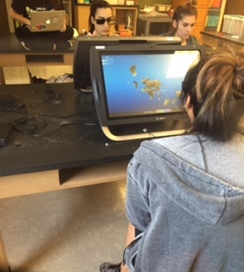
During this week of Sports Medicine, the class performed a pinnacle event that many students look forward to when signing up for this course, dissect cats. Although I have dissected a pig in a previous science class, dissecting a cat allowed me to further understand the anatomy of not only animals, but its similar characteristics to humans as well. Through this week’s classes, I learned where the organs of the digestive, respiratory, and reproductive systems were located and I also learned how to skin a cat.
Although dissecting animals definitely raises questions about humane morals, dissecting animals also gives students a chance to explore science to a fuller extent. According to an article from YorksDispatch, students in the 7th grade from Harrisburg Academy were given the opportunity to dissect squids. Not only did the students not object to the unpleasant smell of the squids, but the students showed great interest when introduced to the lab. Teacher, Sally Ballantine, noted that this opportunity gives children a chance to gain interest in a potential career for their futures, and also gives students a hands-on experience they would not find anywhere else. Thus, while dissecting animals raises many questions, some dissections may prove to be helpful for future discoveries to come.
This week’s focus revolved mainly around the cat dissection. First we learned about the safety precautions/rules revolving labs in general, especially a dissection
- wear safety goggles at all times
- wear a lab coat to prevent preservatives from getting on the skin and clothes
- wear rubber gloves
- cautiously handle sharp objects (scalpel, scissors)
- do not chew gun
- tie hair up
Then, we got into three groups of 3 and each group dissected one cat; there was one ginger cat, one long haired cat, and one white cat. For a majority of the first class, we skinned the cat; first using scissors to start the incision, we cut through the cat’s mid-line located on his/her stomach. Then, using the scalpel, we skinned the cat, separating the layer of fur and skin from the connective tissue which was a web-like material.
The second class mainly consisted of identifying the organs of the reproductive, digestive, and respiratory systems, in addition to playing with the Zspace computer to virtually dissect a cat using 3D technology. Shortly after class started, Mrs. Kahn helped us take the cats out of its bags again, then we went to work dissecting the cat. After cutting through the ribs with scissors, a process that took quite some time, we spent time identifying organs within the cat. Some organs included:

- liver
- gallbladder
- lungs
- bladder
- heart
We were also joined by the AP Biology class who shared their thoughts on the anatomy of the cat as they compared the cat’s organs to those from the pig they recently dissected. In addition to the Biology class, we were also accompanied by Dr. Hegarty, Mrs. Girard and Ms. Chen who helped us identify certain organs within the cat.
After we had finished dissecting the cat and cleaned up the tables, Mrs. Kahn introduced the class to the ZSpace computer which was a touch screen computer that had 3D
technology. On the computer, we took apart and examined the many layers of a cat; from skinning the cat, to seeing its skeletons, to unveiling its organs, Zspace brought cat dissections to a different level both virtually and physically.
*hyperlinked videos and websites show real life cat dissections that may be too explicit for some.
I thought this lab was particularly successful in gaining a fuller understanding of the body’s organs that cannot be experienced in a different way. While this dissection could have been watched on youtube or read about online, the whole process in general of putting on a lab coat and wearing gloves and goggles gave me a full experience of what being a scientist, nurse, and/or doctor is like. Overall, I thought this lab increased my comfort level towards dissections and dead animals in general, and is an essential activity to further ones knowledge if one is interested in entering the medical field.
